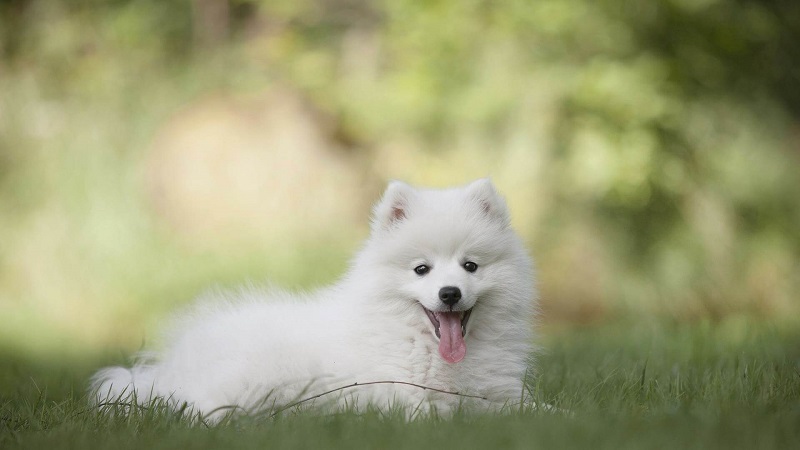
25 Apr Effective photographing pets tips
When you have pets, whether it’s a dog, a cat, a bird, or any other type of pet, it’s hard to resist the urge to take some nice pictures of them. An animal becomes a family member: we like to immortalize it in moments of everyday life, when it plays and has fun with us, or simply catch it in a funny or beautiful pose. But a little bit happens with animals what happens with landscapes too.
Once portrayed in the photograph, they fail to convey the same emotion we would have liked to have captured when we took the shot.
This happens because, when photographing an animal, you have to use some precautions. I will list some that you can use the next time you want to immortalize your four-legged friend, or you will be called to do it for someone else.
Photographing pets tips
This first assumption may seem trivial to you, but for me, it is fundamental. It is not enough to know how to photograph animals: we must keep in mind that each has different characteristics, depending on the species to which it belongs and its own and peculiar character.
So, before dedicating yourself to the photoshoot, it is good to spend a few minutes to get to know your subject better, perhaps talking about it with the owners. The subject’s personality must always emerge from a photo: one must understand if a cat is playful or rather a lazy one if a dog loves to run or sit on the carpet at the owner’s feet.
Only by knowing these sides of each pet will it be possible to grasp them in their attitudes and highlight them in the shots.
SAFETY FIRST OF ALL
It is important to remember that even the friendliest animal in the world is still an animal, with jaws and nails. Unless you are photographing an animal you own, it is always good to use caution. Above all, try to familiarize yourself as much as possible before starting to tinker with the camera because this could make the animal nervous.
HOW TO PHOTOGRAPH DOGS AND CATS
We come to examine in more detail the two subjects that will most easily happen to you under the lens: dogs and cats. There is no need to tell you how different these pets are from each other: this is not just a cliché, and when it comes time to take a picture of them, the differences emerge more clearly.
DOGS
If they are servants, they are usually very obedient, respond to commands, and therefore it will be easy to get them to do exactly what you want. I intrude on the article to give you some news. You may already know this, but I have a dedicated channel that you can follow to stay updated on the various contents that I will publish, with weekly summaries and maybe even with my voice interventions if I find something interesting to report to you. There is also a linked group where you can reply and comment on how public they are or stay in touch with other members! If you are interested, click here to go immediately to my Telegram channel.
For example, you could conceive a shot in the studio, with a prepared backdrop, or shoot the dog in a moment of play, outdoors, perhaps with his human friends.
CATS
You will immediately notice how interacting with a cat, on the other hand, is extremely more complex. While they are very photogenic (and even vain) pets, they hate being told what to do unlike dogs. It will be necessary to use some cunning with them: waving a few games in front of their eyes, which even adult specimens generally cannot resist.
CAPTURING THE ATTENTION OF PETS
Like human portraits, animal portraits also need to have a focus, a point of depth around which to develop photography. Just like for humans, even for animals, this focus must be identified in the eyes. We must try to calibrate the composition of the image, and above all, to position the points of light in such a way that the gaze of the subject is maximized.
For this purpose, it is also important that the background is not too disturbing, and therefore that it is only a soft background that does not blur the foreground subject. The depth of field is a great ally in this operation and will help bring out the most of the animal’s eyes, relegating to the background the rest.
HOW TO MAKE ANIMAL IMAGE INTERESTING
Pets, no matter what size they are, almost always have thick fur, which can help get a very effective shot.
By properly positioning the lights and the camera, it will be possible to create a halo around the animal that will give it a great charm and a certain aura of mystery.
This effect is particularly effective with cats, which, thanks to their very particular eyes with vertical pupils, already have an enigmatic and sometimes a little disturbing aspect.
PICTURE THE ANIMALS FROM TOP TO BOTTOM
A very common pose you can use to portray a dog is from top to bottom. Dogs and other pets tend to tilt their heads a little if, while sitting on the ground, they hear themselves called from a high position. This is a bit of a clumsy attitude that is tender and funny and can give life to very effective shots.
In reality, however, the best suggestion I can give you about the position to take when taking a photo of an animal is to always put yourself at its level, a bit like you do with children. By putting yourself up to his gaze, you will not only win his attention and even his trust, but above all, you will be able to interact with the animal, obtaining more emotional and more participatory photos. Finally, you will also be able to grasp his positions more spontaneously and directly.
PHOTOGRAPHING THE BUNNIES
So far, we have mainly seen how to take effective photos of domestic dogs and cats; but many choose to keep small rodents, such as rabbits or hamsters, indoors.
In their case, we must try to value the extreme tenderness they transmit in some of their more usual movements. For example, bunnies are very nice when they clean their nose.
How to catch them at the right time without making long stalking? Just take the subject in your hand for a few minutes and then leave it on the ground, in the environment in which you intend to portray it.
Instinctively, to get rid of the odor deriving from human contact, he will start to give his fur a good clean. That’s the right moment to take a photo! Another funny position that rabbits take is when they stand up on their hind legs.
They typically do this when they are in a new environment that they don’t know and want to look around. So, all you have to do is take the protagonist of our shots and place him in an unfamiliar place, and then be ready to shoot as soon as he gets upright.
PHOTOGRAPHING THE LITTLE RODENTS
As for small animals, such as mice or hamsters, the suggestion I can give you is to have someone hold them in your hand to take a snapshot of them.
Inside the palm of a human hand, rodents look even more tender and defenseless than they already have by their very nature. The hand also serves as a ladder and shows its small size.
AVOID THE FLASH
The flash is also not recommended when taking pictures of human subjects, as it can easily create the annoying red-eye effect or be annoying if not used carefully.
It would also be good to avoid it when taking pictures of pets. In their case, the reflections in the eyes could be green or other colors, but above all, because the flash could scare the animal and make it run away.
CREATE THE ATMOSPHERE
The last tip I can give you is to show off all your best qualities as a photographer when you have to take shots in the company of animals.
As we said, pets are much more than mere animals: they are members of a family unit and, as such, should be valued.
In a photo where the animal and the owner are portrayed together, a small aperture could be used to give the image a slightly blurred, almost dreamy effect to underline the feeling created between human and animal.
Warm and soft colors give the photo an idea of familiar comfort; more vivid and bright colors convey the dynamism and desire to play with our animal friend.
THE IDEAL LIGHT
The light that is always preferable is the natural one: pre-packaged photographic sets are not suitable for animals. It is always better to capture their image in everyday environments, both outdoors and indoors. But you may not just have to photograph loved and pampered pets.
If you happen to have to take photographs of animals in a shelter for possible adoption, focus completely on the subject and his gaze, minimizing the surrounding environment as much as possible. This will make it easier for him to find a new owner, with whom he can then take many photos!


No Comments